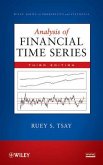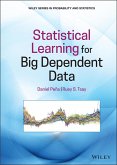Innovation Diffusion Models
Understand innovation diffusion models and their role in business success
Innovation diffusion models are statistical models that predict the medium- and long-term sales performance of new products on a market. They account for numerous factors that contribute to the life cycle of a new product and are subject to continuous reassessment as markets transform and the business world becomes more complex. In a modern market environment where product life cycles are becoming ever shorter, the latest innovation diffusion models are essential for businesses looking to perfect their decision-making processes.
Innovation Diffusion Models: Theory and Practice provides a comprehensive and up-to-date guide to these models and their potential to impact product development. It focuses on the latest product diffusion models, which combine time series analysis with nonlinear regression techniques to create increasingly refined predictions. Its combination of mathematical theory and business practice makes it an indispensable tool across many sectors of industry and commerce.
Innovation Diffusion Models readers will also find:
Innovation Diffusion Models is an essential volume for practitioners in any field of industry or commerce, as well as for graduate students and researchers in business and finance.
Understand innovation diffusion models and their role in business success
Innovation diffusion models are statistical models that predict the medium- and long-term sales performance of new products on a market. They account for numerous factors that contribute to the life cycle of a new product and are subject to continuous reassessment as markets transform and the business world becomes more complex. In a modern market environment where product life cycles are becoming ever shorter, the latest innovation diffusion models are essential for businesses looking to perfect their decision-making processes.
Innovation Diffusion Models: Theory and Practice provides a comprehensive and up-to-date guide to these models and their potential to impact product development. It focuses on the latest product diffusion models, which combine time series analysis with nonlinear regression techniques to create increasingly refined predictions. Its combination of mathematical theory and business practice makes it an indispensable tool across many sectors of industry and commerce.
Innovation Diffusion Models readers will also find:
- Real-world examples demonstrating the kinds of data sets generated by new product growth models and their potential applications
- Discussion of the factors underlying the decision to select a given growth model for a particular product
- Clear, detailed explanation of each model's explanatory ability
Innovation Diffusion Models is an essential volume for practitioners in any field of industry or commerce, as well as for graduate students and researchers in business and finance.
Dieser Download kann aus rechtlichen Gründen nur mit Rechnungsadresse in D ausgeliefert werden.









